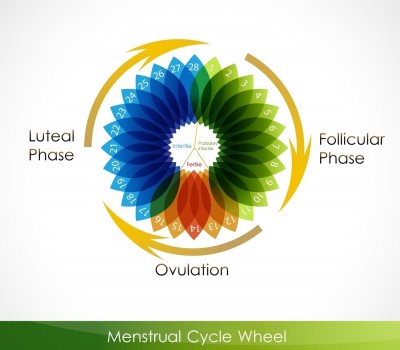According to the American Cancer Society, there are an estimated 12,340 new cases of cervical cancer in America each year. Sadly, approximately 4,000 women die of this silent killer each year.
Women of all ages are at risk for cervical cancer once they begin having sexual intercourse. And the human papillomavirus (or HPV) is the most common reason why malignant cancer cells start to develop in the tissues of the cervix (the pear-shaped organ below the uterus).
As the second most common type of cancer for women worldwide, cervical cancer kills slowly, also making it one of the most treatable and preventable cancers. This is why regular pap smears and vaginal exams, should you encounter any of these symptoms, can save your life…
1. No Symptoms
The scariest thing about this silent killer of women is just that—it’s a silent disease that oftentimes doesn’t show any symptoms at all in the early stages. However, as the cancer advances, you will likely experience pelvic pain, abnormal bleeding, and urinary issues that signal cervix issues.

2. Pelvic Pain
Many women experience cramps at the start of their monthly menstrual cycle. However, achy pelvic pain outside of that time frame, or sharp cramps when you don’t typically suffer any, can be a symptom of cervical cancer.

3. Abnormal Bleeding
One of the most common warning signs of cervical cancer is abnormal bleeding outside of the normal menstrual cycle. Of course, this varies from woman to woman—from pink vaginal spotting to heavy bleeding that comes and goes with no explanation.

4. Painful Urination
Pain when urinating can indicate a problem with the cervix. Bladder pain or an achy sensation during urination often occurs in advanced cancer cases if the cancer spreads to the bladder.

5. Unusual Discharge
Abnormal vaginal discharge-either increased discharge or discharge that appears off in texture, color or odor-can be indicative of cervical cancer. Vaginal or penile discharge may also be an indication of a sexually transmitted disease and so it’s highly recommended that you get tested for these types of infections by ordering an at home STD test panel or visiting your local clinic for help. Typically, discharge will contain mucus (which explains the thickness and foul odor) and should be reported to your health care professional.
6. Abnormal Menstrual Cycles
Most women have experienced abnormal bleeding or spotting between menstrual periods—sometimes when sick, following sexual intercourse, after a pap smear, or during stressful times. However, regular bleeding between menstrual cycles can indicate irritation of the cervix andcervical cancer.

7. Pain or Bleeding After Sex
Even those of us with healthy cervix can see some spotting after sex. However, if pain and bleeding occur more often following sex, it can indicate an underlying health issue such as cervical cancer, and the cervix should be examined by your doctor.

8. Anemia
Anemia can occur with cervical cancer when the number of healthy red blood cells decrease and are replaced by white blood cells trying to fight off the disease. Anemia typically causes the patient to feel tired and completely zapped of energy, which can cause a typically energetic person to experience unexplained fatigue and weight loss due to a loss of appetite.

9. Urinary Incontinence
Any change in bladder habits, such as urine leakage when sneezing or jumping, tinges of blood in the urine (hematuria), or total loss of bladder control (incontinence) may indicate an underlying condition such as cervical cancer as the as the cancer grows larger or spreads to other organs in the body.

10. Back Pain
Pelvic or back pain, particularly in the region of the lower back that may send shooting pains down the leg, and even cause swelling (edema) of the legs.

(via Active Beat)










![Wanted: A Nigerian Statesman, By Emeka Monye [MUST READ] Nigeria Cheta Nwanze Democracy, Emeka Monye](https://www.thetrentonline.com/wp-content/uploads/2016/01/1966-Coup-Players-The-Trent-e1644149315279.jpg)


